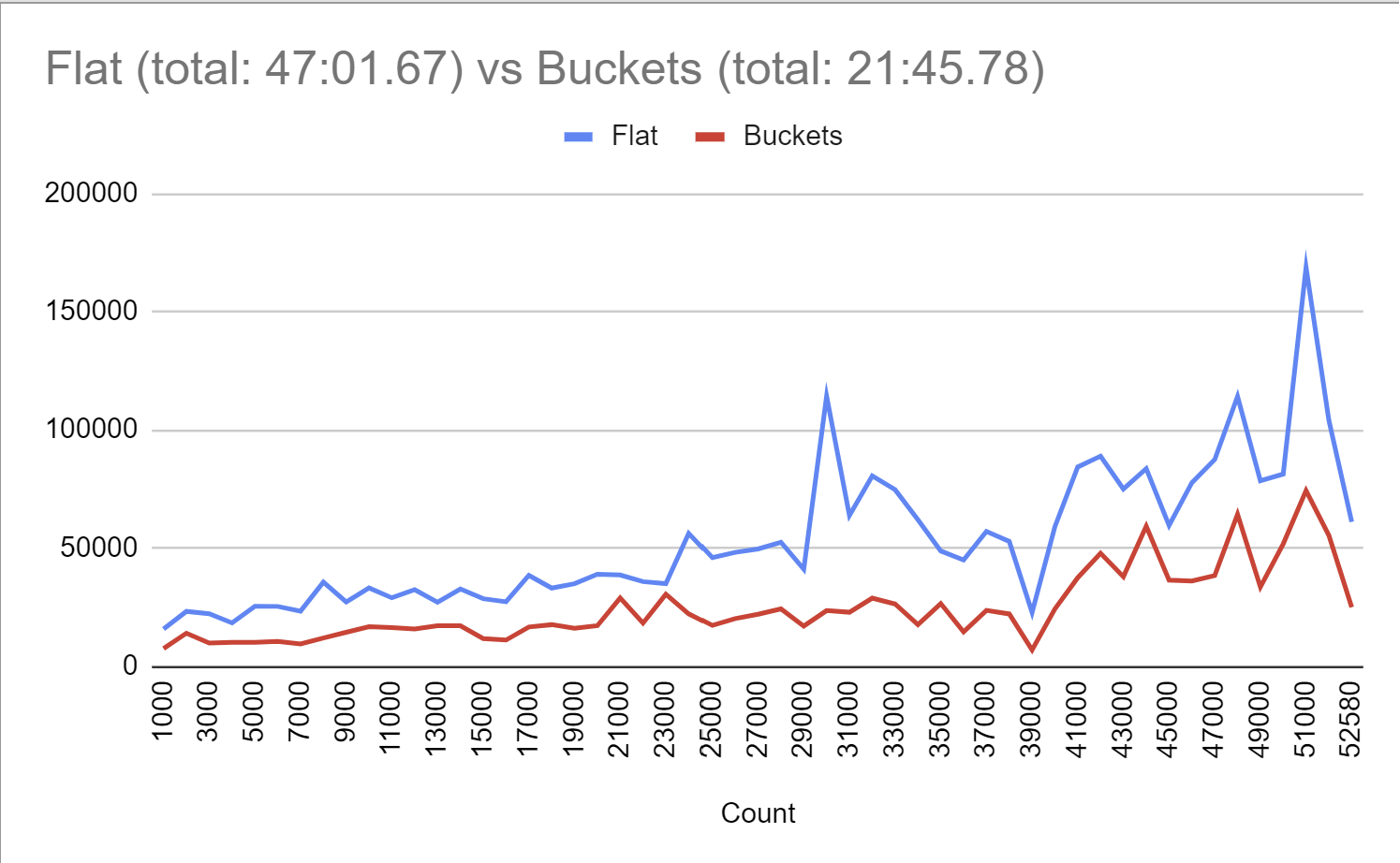This is a nopCommerce plugin that generates thumb images in "buckets" instead of a flat file structure.
This works much better on Windows than the default implementation, and also better than the Multiple thumb directories setting under Media Settings, since that only uses the first three letters of the thumbnail image name, and the first 8 characters are the picture id.
This implementation uses the picture id, but by bucketing thumb images in a two-level hierarchy. The first level is the thousand part, e.g. all pictures with an id under 10000 will be in folder 0, all pictures between 10000 and 19999 in folder 10, etc. The second level is the hundred part, which divides the 10000 numbers into 100 parts (so maximum of 100 subfolders).
Examples:
- Picture id is 123, then the thumb would be in a subfolder 0\100
- Picture id is 13910, then the thumb would be in a subfolder 10\3900
- Picture id is 20999, then the thumb would be in a subfolder 20\9900
Here is a comparision of generating thumb images for 50k pictures a) default nopCommerce PictureService and b) the BucketPictureService in this plugin. ~47 minutes vs ~22 minutes.
The repository contains separate directories for each nopCommerce version, e.g. 4.60, 4.70, and so on.
Each Nop.Plugin.Misc.BucketPictureService project contains references to nopCommerce projects. For convenience the nopCommerce files are references via drive n:. It is recommended to map n: to the location of the nopCommerce source. For example, if nopCommerce source files are available in c:\dev\nopCommerce public releases, and each version in a subdirectory named by the release (i.e. nopCommerce 4.20) then the following command will map n: to that location
net use n: "\\mycomputer\c$\dev\nopCommerce public releases" /persistent:yes
where mycomputer is the name of the development machine.
To build the projects, either open the preferred solution (.sln) file, or execute the build-all.cmd file in the root directory. That command builds all versions both in debug and release mode.
The output of the build, whether from Visual Studio, or from the build-all.cmd file, goes to the _build directory in the root directory
